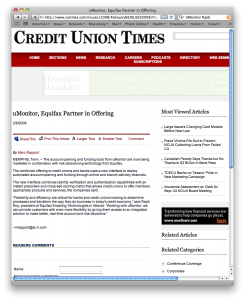Would you match the comp?
How often has this happened to you? A manager in your group walks in to your office and tells you that a critical resource in her organization has given notice. He is joining this other company because of a substantial jump in compensation. If only you can match that comp, your manager feels confident of arguing him out of his decision. She needs your support to approve this.
I am sure not infrequently. What do you do?
Almost without exception, I have learnt to say No. Fifteen years back I would have thrown more money, fought hard and done whatever to change that person’s mind. I do not advise to do that any more. Hit rate was very low for me. Here is what I have learnt:
Changing a job is a big decision for most human beings. Most people don’t want to look for a job for sheer reasons of inertia, zone of comfort etc. Almost surely nobody starts looking for a job because one is seeking more money. One goes thru a lot of introspection, frustration or whatever reason to convince oneself that one is going to change jobs. Somewhere along the way, he confides and explains his plans to his wife and family too. That is a very big mental jump.
Once the search process and selection process begins, the person is pretty much over the cliff in terms of deciding not to stay back. Most surely, wherever he goes there is a better compensation package – even if slightly. Not because he was getting paid less fairly but most hiring companies know they have to give a sweeter deal to move the person.
When he confronts his manager – better comp is cited as a prime reason – incorrectly – why he she wants to move. It is an easier reason – it is a hard number plus one gets an elated sense of pride by flaunting higher market valuation. It is a more difficult argument to prove which workplace is better, has better opportunities etc for the sheer subjectivity of it.
At this point, throwing more comp has a very little ability to work. Even if one did match and made a compelling point why the current job is better the probability of winning is very low. Because – and here is where the second reality comes in – usually one has already committed to the other job before notifying the manager. Most definitely, one has mentally moved to the excitement of the new place.
Trying to get the person to mentally back off from that is very difficult. It is almost insurmountable to have the person fall on the sword in front of the prospective company as well as the family and explain why it was a bad decision to begin with to leave. There are too many bridges to be burned. And now his current company knows he was on the look out. It is far – and I mean very far – easier to just go with the original decision.
My advise to my managers is usually to not commit to any comp side at all. Work with the employee to convince himself that he actually wants to stay for all the right reasons. Signal that you can work out the comp side as long as all the other things are worked out. But make sure that the employee can undo the decision mentally and in front of others at home and new company first. The comp part is the easiest part. If you increase the comp first, you almost invariably are going to get the same decision – after a couple of days of “careful thinking”.
Comments?

